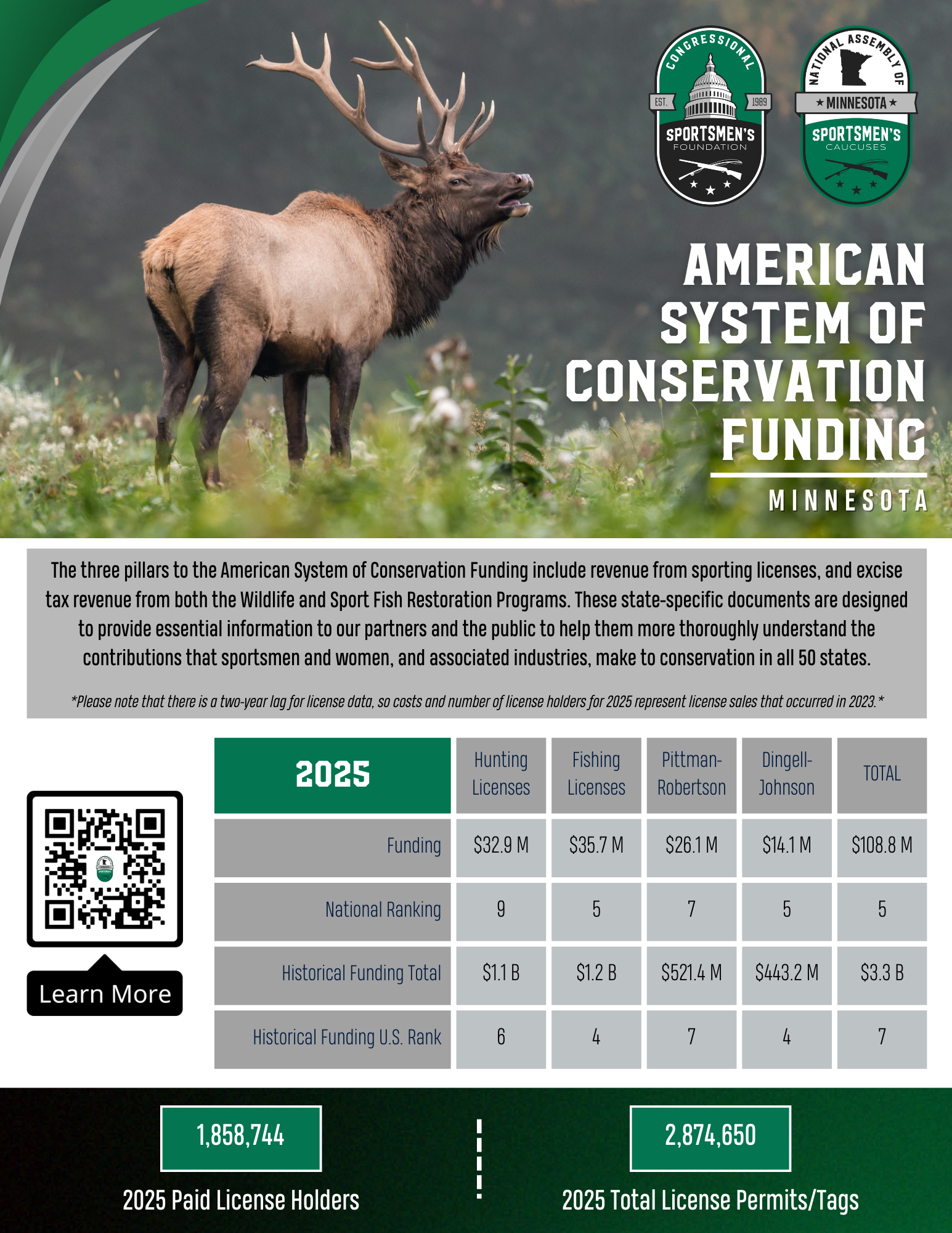On February 17, as part of the 2017 National Pheasant Fest & Quail Classic in Minneapolis, the Minnesota Legislative Sportsmen’s Caucus hosted a reception with leaders of the Minnesota conservation community. The gathering shared ideas to elevate the discussion about conservation efforts throughout the state and learned more about the accomplishments of the community. Caucus …
The participation rates in the state have dropped around five percent in hunting and nearly 15 percent in angling since the 1980s. For the past decade, the number of sportsmen and women in Minnesota has remained stable, with approximately 1.1 million resident anglers and 550,000 resident hunters. While the number of sportsmen and women are …
Minnesota: DNR Hosts Summit on Hunter and Angler Recruitment and Retention Read More »
On October 13, the Minnesota Department of Natural Resources (DNR) released a proposed rule to ban lead shot on all wildlife management areas (WMAs) in the far western and southern half of Minnesota. The affected area is referred to as the “Farmland Zone,” and contains almost 1,300 of the state’s 1,524 WMAs, approximating 600,000 acres …
Minnesota DNR Proposes Lead Shot Ban on 600,000 Acres of Public Land Read More »
Summary Over the last decade, many states have expanded opportunities for archery hunters wishing to use crossbows. Incorporating crossbow hunting opportunities into game management may increase hunter recruitment and retention, and crossbows can be valuable tool for controlling game populations, particularly in suburban and urban areas. Introduction Over the past decade, many states have eliminated …
Summary Many sportsmen and women depend on federal lands managed by agencies such as the U.S. Forest Service, Bureau of Land Management and U.S. Fish and Wildlife Service for access to activities like hunting, fishing and recreational shooting. As these agencies develop strategies to manage federal lands, it is critical for those who support these …
Introduction Chronic wasting disease (CWD) is a progressive, fatal, degenerative neurological disease occurring in farmed and free-ranging deer, elk, caribou, and moose. The disease was first recognized in 1967 as a clinical ‘wasting’ syndrome of unknown cause in captive mule deer in Colorado. CWD belongs to the family of diseases known as transmissible spongiform encephalopathies …
Summary In addition to the American System of Conservation Funding, some states have begun to seek alternative methods of funding for their fish and wildlife agencies. A conservation sales tax on all taxable goods is one such mechanism that states might consider implementing. This excise tax is primarily applied to sporting goods such as firearms …
Summary Over the last few decades, rising costs for natural resource management and increased public utilization of these resources has led to the need for additional methods of funding for conservation. Dedicating lottery proceeds to funding conservation can assist with efforts such as increasing access to public lands, habitat and endangered species conservation, wildlife education, …
Summary Similar to hunting and fishing licenses, many states now allow hunters to purchase Duck Stamps electronically. However, policies regarding the issuance of these stamps varies from state to state, and even in many states where the electronic sale of Duck Stamps is authorized it is still required that hunters print out and retain a …












